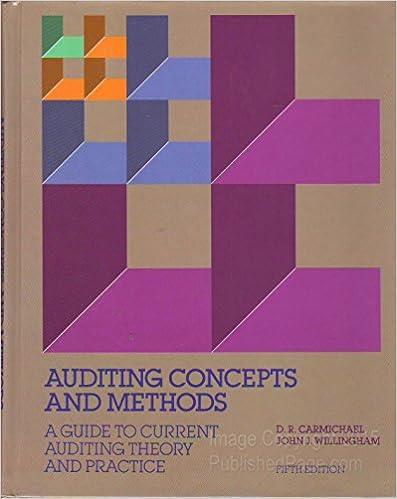For each one of the following statements indicate whether the statement is true or false. a. When
Question:
For each one of the following statements indicate whether the statement is true or false.
a. When the auditor's approach to substantiating an account balance is to apply an audit procedure to less than 100 percent of the items included in the balance, audit sampling is being used.
b. If audit sampling is used to apply a substantive test, the detection risk for that test is caused, in part, by sampling risk.
c. A characteristic of interest in an audit sample may be either monetary error or deviations from prescribed internal control structure policies or procedures.
d. If an auditor selects a sample by using a random number table, the auditor is using a statistical approach to audit sampling.
e. According to SAS No. 39 (AU 350), an audit sample should be selected using a method that can be expected to produce a representative sample. This means it is now inappropriate for auditors to use judgment in selecting items to examine.
f. In planning an audit sample for a test of a transaction class, the auditor needs to specify the control objectives and the internal control structure policies and procedures that achieve them for that transaction class.
g. In planning a test of controls using audit sampling, the auditor needs to consider the tolerable rate, risk of assessing control risk too high, and expected rate.
h. If the auditor has estimated sample size judgmentally, the sampling risk associated with the sample results cannot be quantified even if the sample was selected randomly.
i. In planning a direct test of a balance using audit sampling, the auditor must consider the relation between the specific audit objective and the sample. In such sampling applications, the audit objectives are usually those related to existence and valuation.
j. As tolerable error as a percentage of the account balance to be sampled increases, sample size increases.
k. In planning a sample for a direct test of a balance, the risk of incorrect acceptance is the detection risk for that test.
l. The sum of the tolerable errors used in individual sampling applications may exceed the allowance for undetected error for the financial statements taken as a whole.
Step by Step Answer:

Auditing Concepts And Methods A Guide To Current Auditing Theory And Practice
ISBN: 9780070099999
5th Edition
Authors: Mcgraw-Hill





